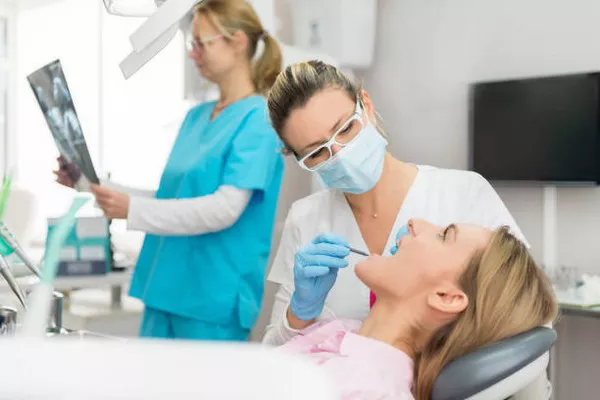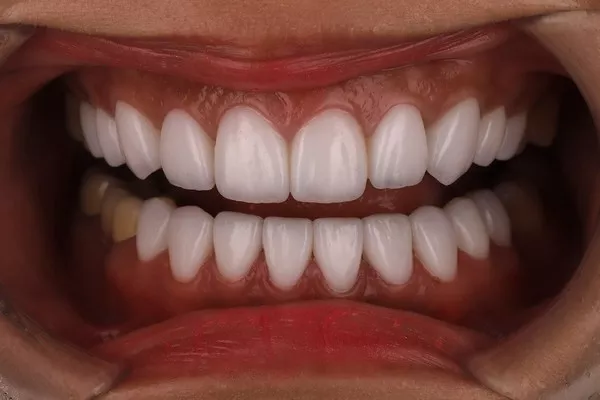Teeth whitening is a popular cosmetic procedure aimed at enhancing the brightness of your smile. However, many people experience their teeth turning yellow again shortly after whitening treatments. This can be frustrating and puzzling, leading to questions about the effectiveness of whitening products and the factors that contribute to this discoloration. In this article, we will delve into the common causes, genetic factors, staining agents, enamel health, different whitening methods, maintenance tips, the importance of rehydration, and the necessity of professional advice to maintain that bright, white smile.
Common Causes
Enamel Dehydration
One of the most common reasons for teeth appearing yellow after whitening is enamel dehydration. Whitening treatments, especially those involving peroxide-based products, can temporarily dehydrate the enamel. This dehydration can cause the teeth to look dull and yellowish until they rehydrate and regain their natural color.
Dehydration occurs because the active ingredients in whitening products remove surface stains by opening the enamel’s pores. During this process, some of the moisture within the enamel is lost. Once the teeth rehydrate over the course of a few days, they often return to a whiter appearance. However, during this interim period, the teeth can appear more yellow than before the treatment.
Genetic Factors
Natural Tooth Color
Genetics play a significant role in determining the natural color of your teeth. Just like hair and skin color, tooth color can vary from person to person. Some people naturally have whiter teeth, while others may have teeth that are more off-white or yellowish, even when they are perfectly healthy and clean.
Effectiveness of Whitening Treatments
The genetic makeup of your teeth can also influence how effective whitening treatments are. For example, the thickness and translucency of your enamel are genetically determined. Thicker enamel tends to appear whiter, while thinner enamel allows more of the yellowish dentin beneath to show through. Therefore, individuals with naturally thinner enamel may find that whitening treatments are less effective in achieving the desired level of whiteness.
Staining Agents
After undergoing a whitening treatment, it is crucial to be mindful of what you consume, as certain foods and drinks are notorious for causing stains. Common dietary culprits include:
Coffee and Tea: Both beverages contain tannins, which can cause significant staining. They can penetrate the enamel and lead to discoloration.
Tobacco: Smoking or chewing tobacco leaves dark stains on the teeth due to the tar and nicotine it contains.
Red Wine: This popular drink is rich in chromogens and tannins, which can stain teeth.
Dark Berries: Fruits like blueberries, blackberries, and cherries have strong pigments that can adhere to enamel and cause stains.
Soda and Sports Drinks: These beverages are acidic and often contain coloring agents that can erode enamel and stain teeth.
Prevention Tips
To minimize the risk of staining after whitening, consider the following tips:
- Use a straw for beverages like coffee, tea, and soda to limit contact with your teeth.
- Rinse your mouth with water after consuming staining foods and drinks.
- Brush your teeth approximately 30 minutes after eating or drinking to prevent stains from setting in.
see also: What Is The Best Whitening For Your Teeth
Enamel Health
Enamel is the outermost layer of your teeth and serves as a protective barrier against physical and chemical damage. It is also the primary layer affected by whitening treatments. Healthy, thick enamel appears whiter because it reflects light better and conceals the underlying dentin, which is naturally yellow.
Thin or Damaged Enamel
If your enamel is thin or damaged, the yellow dentin beneath becomes more visible, making your teeth appear yellow even after whitening. Enamel can become thin due to several factors:
Aging: As you age, enamel naturally wears down, exposing more dentin.
Acidic Foods and Drinks: Frequent consumption of acidic substances can erode enamel over time.
Bruxism: Grinding your teeth can wear down enamel.
Poor Oral Hygiene: Failing to maintain proper oral hygiene can lead to enamel erosion and decay.
To protect and strengthen your enamel, consider using fluoride toothpaste and mouthwash, avoid overly aggressive brushing, and limit acidic foods and beverages.
Whitening Methods
Professional Treatments
Professional whitening treatments, performed by a dentist, typically involve higher concentrations of whitening agents compared to at-home kits. These treatments can include in-office bleaching procedures or custom-fitted trays for at-home use. Professional treatments are often more effective and longer-lasting but can still lead to temporary enamel dehydration.
At-Home Kits
Over-the-counter whitening kits are widely available and come in various forms, such as strips, gels, and trays. While these products can be convenient and less expensive, they generally contain lower concentrations of active ingredients and may require more frequent use to maintain results. They can also lead to enamel dehydration and sensitivity.
Natural Remedies
Some people opt for natural whitening remedies, such as baking soda, hydrogen peroxide rinses, or oil pulling. While these methods can help remove surface stains, they are less effective than commercial whitening products and should be used with caution to avoid damaging enamel.
Comparing Methods
When choosing a whitening method, consider the following factors:
Effectiveness: Professional treatments typically offer more dramatic results.
Convenience: At-home kits are more convenient and cost-effective but may require more upkeep.
Sensitivity: All methods can cause temporary sensitivity, but professional treatments are usually better monitored to minimize discomfort.
Maintenance Tips
Avoiding Staining Foods and Drinks
To prolong the effects of whitening treatments, it is essential to avoid foods and drinks that can cause stains. In addition to the previously mentioned culprits, be cautious with foods like curry, soy sauce, and balsamic vinegar, which can also lead to discoloration.
Proper Oral Hygiene Practices
Maintaining good oral hygiene is crucial for keeping your teeth white and healthy. Here are some tips:
Brush Twice a Day: Use a soft-bristled toothbrush and fluoride toothpaste to clean your teeth thoroughly.
Floss Daily: Flossing removes plaque and food particles between teeth that brushing alone cannot reach.
Use Mouthwash: Antibacterial mouthwash can help reduce plaque and keep your mouth clean.
Regular Dental Checkups: Visit your dentist regularly for professional cleanings and checkups to monitor your oral health.
Rehydration
After using whitening strips or undergoing a whitening treatment, it is essential to rehydrate your teeth. Dehydrated teeth are more prone to appearing yellow and can feel sensitive. To help rehydrate your teeth:
Drink Plenty of Water: Staying hydrated helps restore moisture to your teeth and mouth.
Use a Humidifier: If you live in a dry climate, a humidifier can help maintain moisture levels in your mouth.
Avoid Alcohol-Based Mouthwashes: These can further dehydrate your mouth and teeth. Opt for alcohol-free versions instead.
see also: Can You Whiten Just One Tooth
Professional Advice
When to Consult a Dental Professional
If your teeth remain yellow despite following these tips, it may be time to consult a dental professional. Persistent yellowing can indicate underlying issues such as:
Tooth Decay: Cavities and decay can cause discoloration.
Enamel Erosion: Significant enamel loss reveals more of the yellow dentin.
Gum Disease: Infected gums can lead to discoloration and other oral health problems.
Discussing Further Treatment Options
A dental professional can evaluate your specific situation and recommend further treatment options if necessary. These may include more intensive whitening procedures, veneers, or other cosmetic solutions to achieve the desired level of whiteness.
Conclusion
Maintaining white teeth after whitening treatments involves understanding the common causes of yellowing, recognizing the role of genetics, avoiding staining agents, and practicing good oral hygiene. Rehydrating your teeth and consulting with a dental professional when needed can help ensure your smile stays bright and healthy. By following these guidelines and taking proactive steps, you can enjoy the lasting benefits of your whitening treatments and maintain a radiant smile.
FAQs about Teeth Whitening and Yellowing
1. Can yellow teeth become white again by brushing?
Yellow teeth can be lightened through regular brushing, especially if the discoloration is due to surface stains from foods, drinks, or smoking. Using a whitening toothpaste can help remove surface stains. However, if the yellowing is due to intrinsic factors such as genetics, aging, or certain medications, brushing alone may not be sufficient. In such cases, professional treatments like whitening gels, strips, or dental procedures may be necessary to achieve significant whitening.
2. Why do teeth stain after whitening?
Teeth can stain after whitening for several reasons:
Diet: Consuming staining substances like coffee, tea, red wine, berries, and sauces can cause the teeth to absorb pigments and stain.
Smoking: Tobacco products can rapidly stain teeth due to the tar and nicotine.
Poor Oral Hygiene: Inadequate brushing and flossing can lead to plaque build-up, which can harbor stains.
Porous Enamel: Teeth become temporarily more porous after whitening, making them more susceptible to new stains for a short period. It’s recommended to avoid staining foods and beverages for at least 48 hours after whitening.
3. Why do my teeth look yellow after a cleaning?
After a professional dental cleaning, teeth may appear more yellow for a few reasons:
Removal of Stains: The cleaning process removes surface stains, which might reveal the natural color of the teeth underneath, which can sometimes be more yellow than expected.
Exposed Dentin: If enamel is worn down, the underlying dentin, which is naturally yellow, can become more visible.
Lighting and Polishing Effects: The lighting in the dentist’s office and the smoothness of polished teeth can also affect how your teeth look, potentially making any remaining yellow tones more noticeable.
4. How long does it take to reverse teeth yellowing?
The time required to reverse teeth yellowing depends on the method used and the extent of the discoloration:
Whitening Toothpaste: Can take several weeks to show noticeable results and is generally more effective for surface stains.
Over-the-Counter Whitening Products: Whitening strips and gels may show results within a few days to a few weeks.
Professional Whitening: In-office treatments can yield significant results in one or two sessions, with each session lasting about an hour.
Consistency: Maintaining a good oral hygiene routine and avoiding staining foods and habits are essential for sustaining results and preventing new stains from forming.
You Might Be Interested In




























